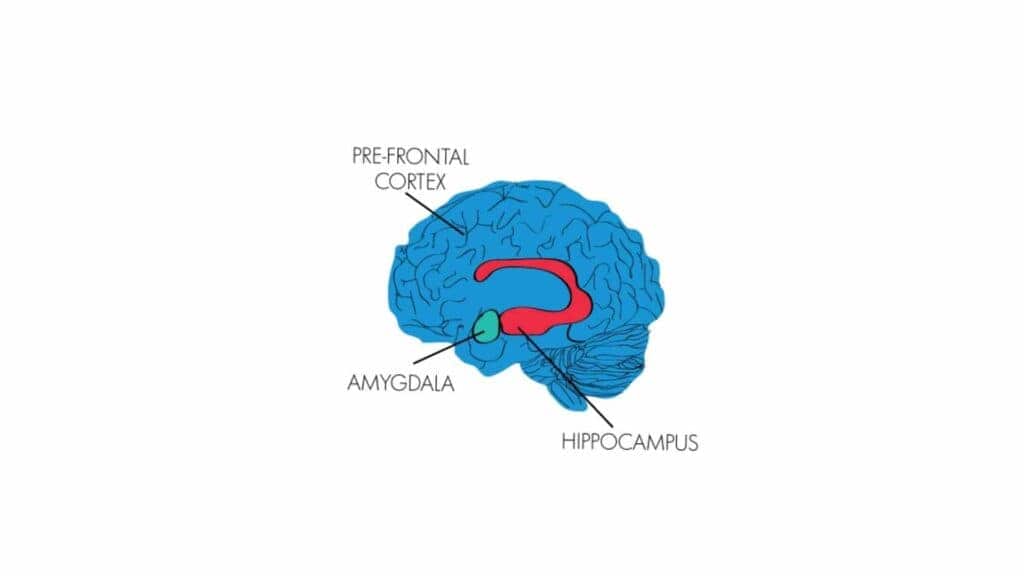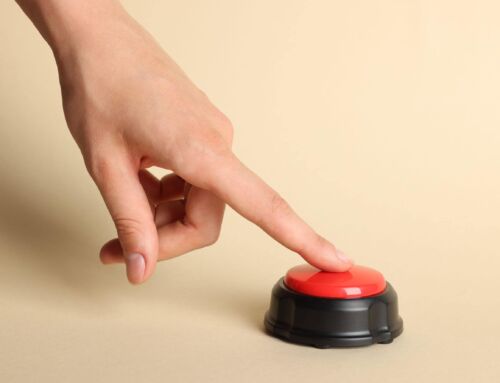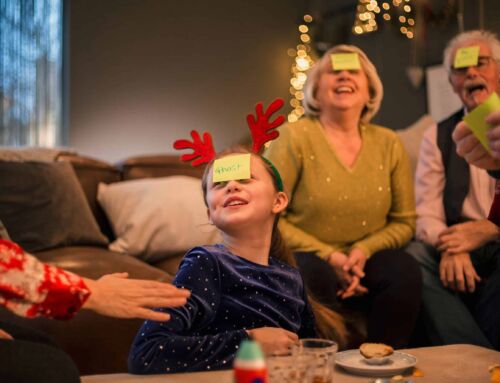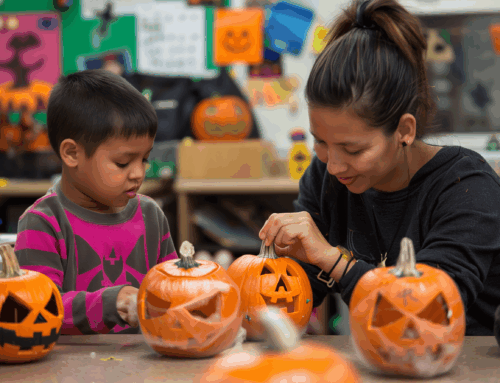We enjoy teaching students about their brain and how to be in charge of it. When kids understand how their brain works and that they can be in charge of it, they are empowered to take responsibility for themselves. The amygdala is a key player in the brain because it is our fight, flight, or freeze center and where big feelings and emotions are coming from.
Here’s how to teach children about the amygdala.
Duration: 30 minutes
Materials: None
Lesson Activities: The Chime, Mindful coloring
Link to Video: Three Parts of the Brain
Download: English PDF / Español PDF
How To Teach It
Step 1 – Open With a Brain Break
Open with a brain break. “Before we can learn about our brain, we have to get our brain ready.”
Begin by introducing the chime if you have not already (Here’s how to do a brain break). Start off with the chime. Hands on belly or other anchor spot (heart, lap, knees). Listen to the chime consecutively from one time to three times depending on the student’s needs for getting regulated.
Use this short time to help students get their brains and bodies ready for learning.
Step 2 – Introduce Guard Dog
A key part of this lesson is engaging the class by having the puppets do the talking. This can feel silly or uncomfortable at first but it is necessary for engaging the class and integrating the information.
- “Today we are going to begin to learn about our brain!
- “Do you know where your brain is? That’s right?!”
- Have a quick conversation about the brain. How it feels… the bone protecting your brain. This will help engage the class. If you have the brain model, pass it around the class.
- “Now today I brought a friend who is going to teach us about a really important part of our brain. Are you ready to meet him?”
- Introduce the guard dog puppet by making him loud and silly with the class. Explain that Guard Dog represents a really important part of your brain, the amygdala.
Step 3 – Guard Dog Introduces the Amygdala
This dialogue is just a guide! Use and adapt it to your own style. What follows should come from the guard dog puppet.
- Hi, boys and girls! I am SO excited to be here today! Oh my- look at all of you! Are you ready to learn all about me?”
- “I have a huge job… I have to keep you safe. Do you feel safe right now?
- Tell me what makes you feel safe now. When you are scared, or sad, or angry, or hungry, or tired, I’m the one who lets everyone else know that you need help. I do this by (bark). Do you know the times when you cry or just get upset? (have them name some of those times)
- That is when I bark. So someone will help you feel better. I am also in charge of “curiosity.” Do you know what that is? It’s when you are doing one thing, and then something else happens, and you want to know what it is. So you stop what you are doing, and go to the new thing.” (Demonstrate with the puppet by sniffing, and moving and sniffing something else.) “Curiosity is a great thing because you get to learn new stuff.”
- Do you want to learn what my brain name is? It is a really big word. Are you ready?!”
- “Amygdala!” Say it several times with the class including breaking it into syllables and saying it “A-myg-da-la.”
- “Repeat after me and clap with each syllable.” (3 times)
- Chant: “A-myg-da-la, I keep you safe! A-myg-da-la, I keep you safe! A-myg-da-la, I will keep you safe!”
- “When I think you are in danger or need something really important like food or sleep or time with mommy, or when I am curious, I sort of take over the brain. It might feel like you are flipping your lid! And when this happens, the other parts of your brain don’t work as well, making it hard to learn or pay attention. So you have to help me calm down. That’s why we take deep breaths!”
Step 4 – Closing With Gratitude
Create a closing routine with your class around gratitude. We know that when children practice thinking about what they are grateful for it wires their brains to be happier, calmer, and less stressed. For this activity you could have children discuss what they are grateful for their Guard Dog protecting them against.
Keys to Success
Vocabulary
Guard Dog, Amygdala, Chime, Calm, Focus, Emotions, Feelings.
Note: We recommend having a chart that displays different feelings and emotion words and pictures.
Make it a Habit
Talk about when you notice students’ guard dogs are on alert. Ask the class, “What can we do to calm our guard dogs right now?”
Practice it
Practice mindful coloring each day for 5-10 minutes. Hold up the guard dog puppet as a cue that the class needs to get calm. Encourage students to hold up a puppet when they feel the class needs to get calm. Give each student a bad to keep their puppets in as they complete each one.
Send it Home
After students have completed all 3 brain puppets send home a description for parents about the 3 key players in the brain. Challenge students to teach their parents about the 3 key players in the brain!
Brain Science
The amygdala is fully developed before birth. The amygdala is deep inside the brain and is about the size of an almond.

Download Key Players in the Brain PDF
Recommended Books
Recommended Websites
Make It Your Own
Once you have the basics of being the Guard Dog down. Start to explore situations in which the Guard Dog might show up. This can help get students become more aware of times their very own Guard Dog is trying to get their attention.



